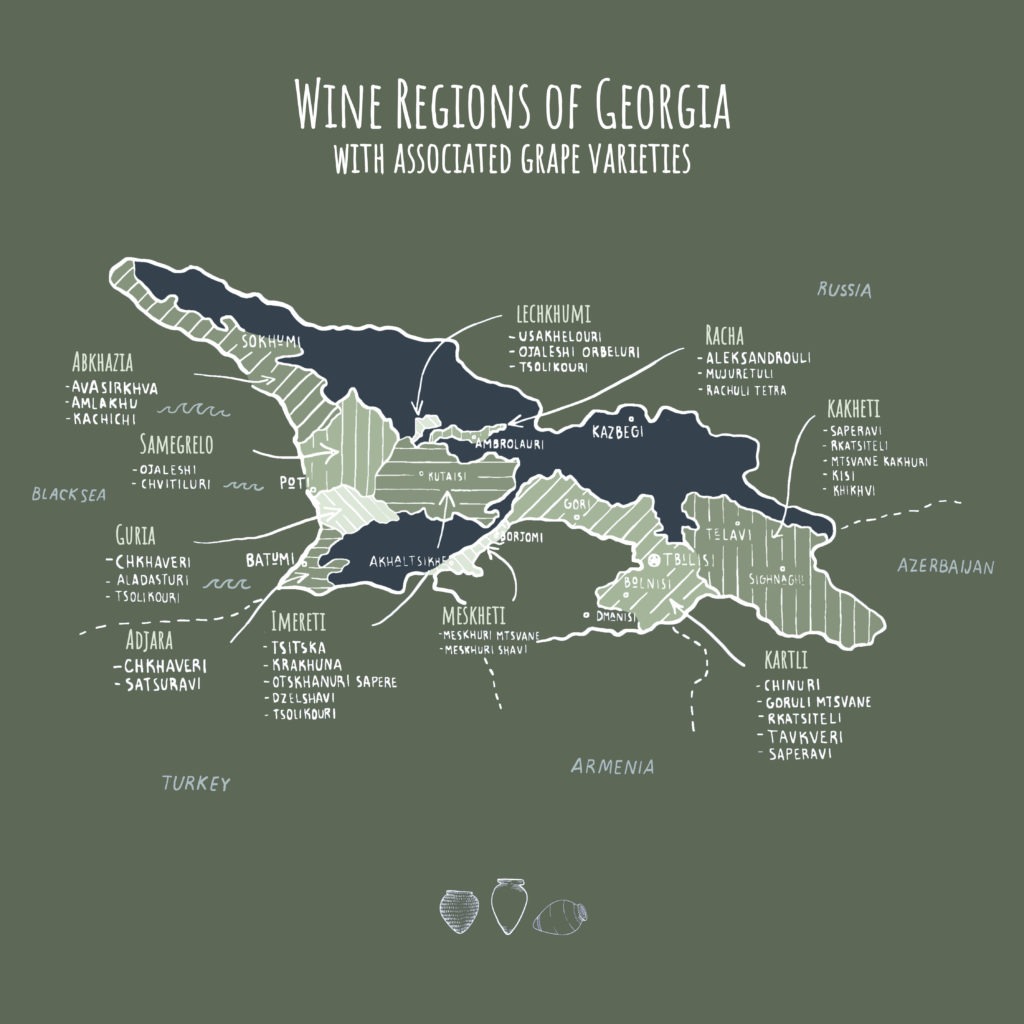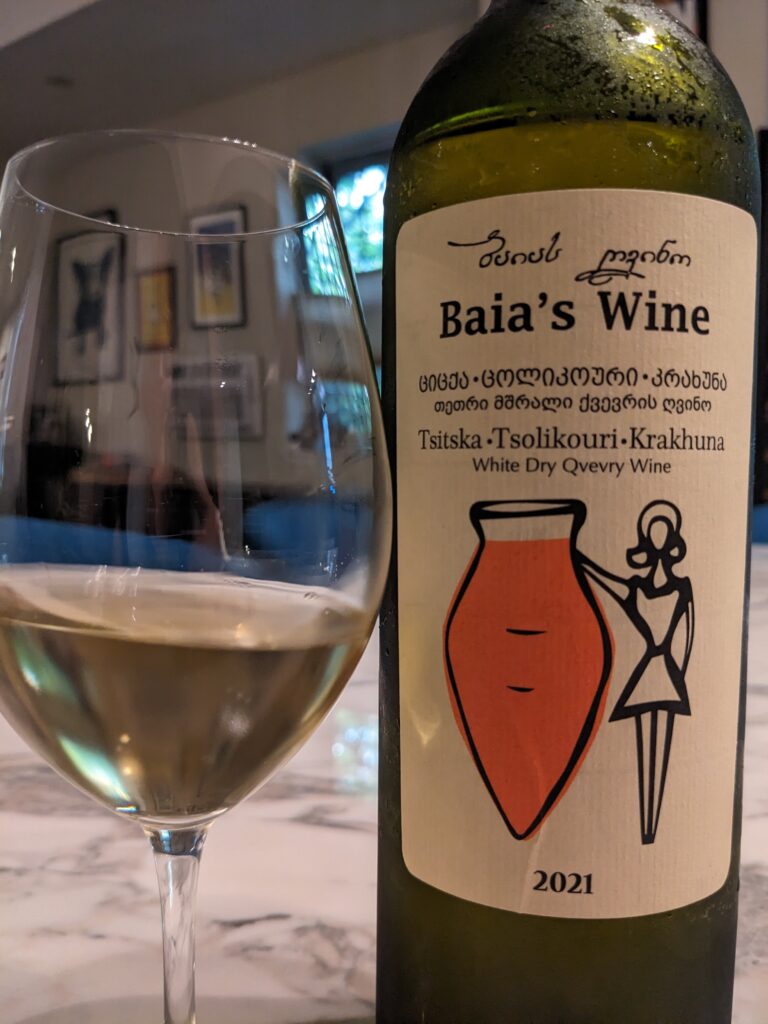
I’ve got Georgia on my mind… the country, not the state. Widely recognized as the birthplace of winemaking, archaeological evidence gives credence to Georgia’s claim as “the world’s oldest wine-producing country.” Today, Georgia boasts 25 Protected Designations of Origin (PDOs) located across its eastern and western regions, Most of these are found in the eastern region of Kakheti, which represents 75% of the country’s plantings and 70% of total wine production. While the western region is smaller, its wines are no less important or of lower quality.
>>Learn more about Georgia’s heritage here.

More importantly, its ancient tradition is still relevant today, with modern producers continuing the use of clay vessels called qvevri (alternately kvevri) as well as reviving an emphasis on skin contact. This latter technique involves leaving the juice and skins together during fermentation, thereby resulting in an amber or orange tint to the wines, despite having been made with white grape varieties. Skin contact also imparts a tannic grip and there might be some oxidation intentionally introduced during the production.
Both the eastern and western regions produce wines with skin contact, yielding a diverse set of wines depending upon terroir, grape varieties, and the specific vinification techniques utilized in their production.

In Kakheti, the main grape varieties used for amber wine production include Rkatsiteli, Mtsvane, Kisi, and Khikhvi. These wines are typically described as being complex and rustic, as well as powerful, with meditation and food friendly options.
Among the western areas, the subregions of Imereti, Racha, Lechkhumi, Guria, Samegrelo, and Adjara are known for their amber wines. The largest of these is Imereti at 15.1% of the country’s production.
Here, the key grape varieties grown for amber wines include Tsolikouri, Tsitska, and Krakhuna. Additionally, these wineries generally utilize smaller-scale production methods. The wines of Imereti are known for being lighter and fresher with less ripeness and extraction.
I recently had the good fortune to taste through three skin contact wines from Georgia, which provided an enlightening and informative look at these wonderful and exciting wines. Two of these were from Kakheti and the third was from Imereti; all of them were delicious!

Tbilvino Qvevris Kisi 2020 (SRP $24)
Made from the Kisi grape, this wine is pale amber /deep gold in color, with honey, apricot, dried fruit, and a slight oxidative note on the nose. The dry palate offers up dried apricots, exotic spices, a noticeable tannic grip, medium body and long length.
Tamada Qvevri White 2015 (SRP $26) This wine brings together Rkatsiteli, Mtsvane and Kisi grapes. Having been aged in the bottle, this wine is deep amber color, showing some development with aromas of nuts, dried fruits, and musk. The complex palate is dry, with medium acidity, full body, a slight tannic grip, flavors of tea, ginger and dried apricots, culminating in long length.

Baia’s Wine Tsitska-Tsolikouri-Krakhuna 2021 (SRP $24.99)
A blend of Tsitska, Tsolikouri and Krakhuna, the grapes were grown in the village of Obcha, Region of Imereti. This wine displays aromas of honey and floral notes. It was rich and unctuous on the dry palate, with Asian pear, peach, and is slightly effervescent, with light to medium body, nice acidity and a slightly oxidative note.
